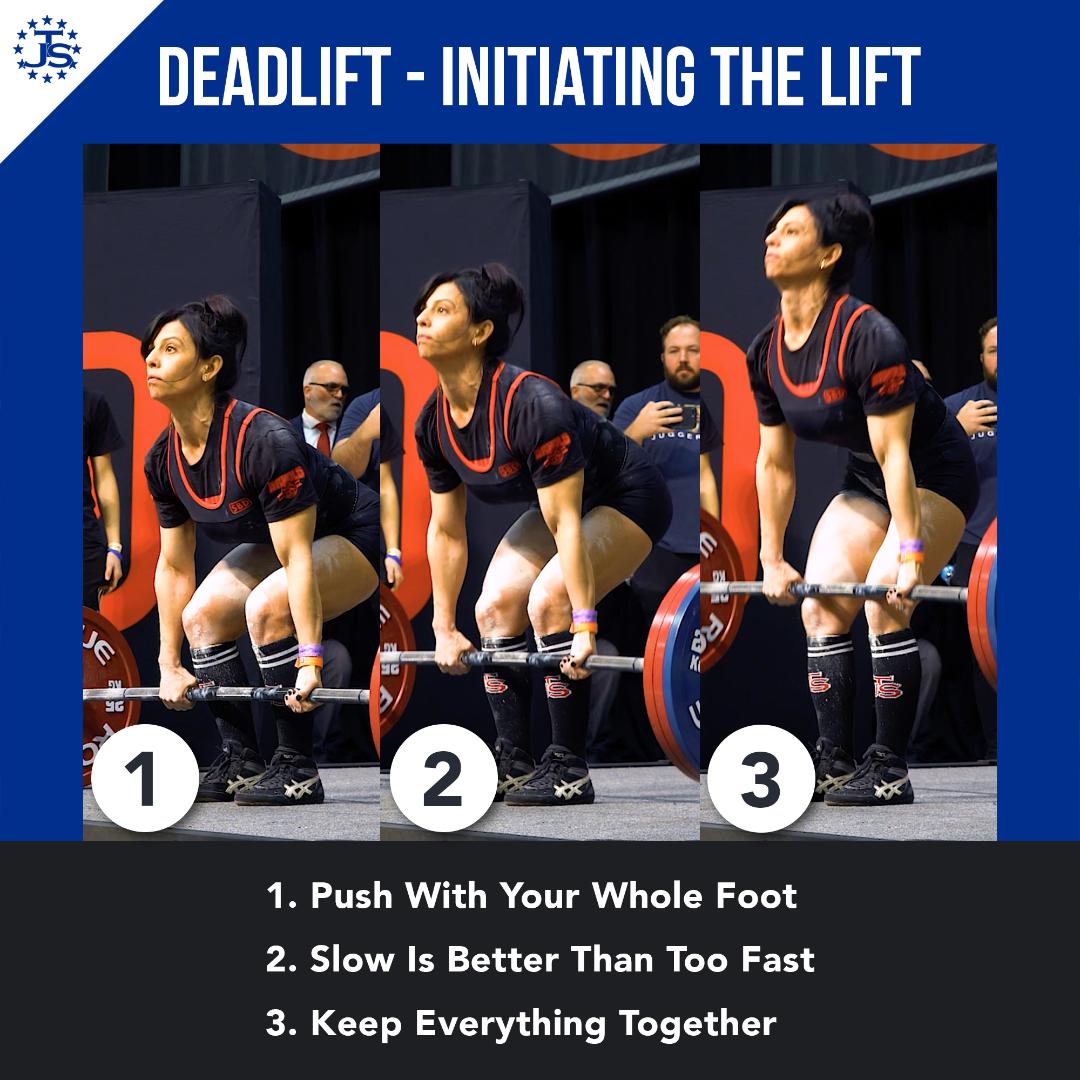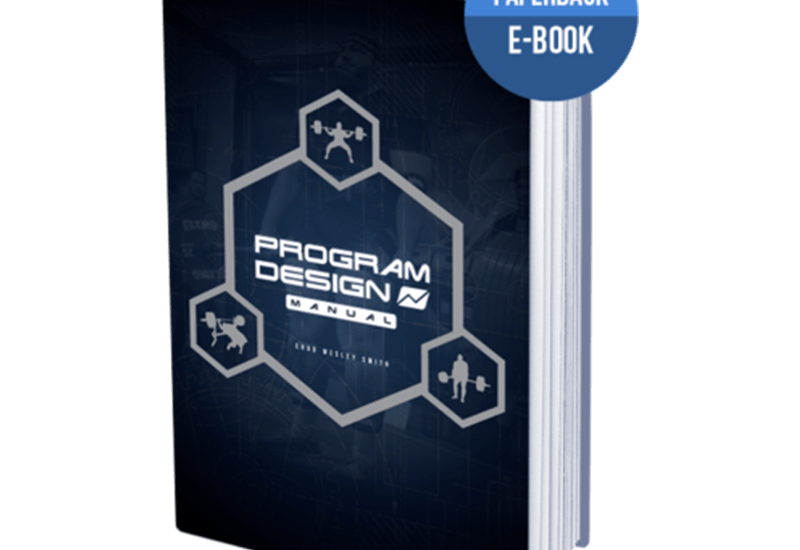Written by Chad Wesley Smith
These are the 4 most important aspects of Deadlift technique to focus on for better lifts and longevity.

A well-aligned start position is the first step in a strong and efficient Deadlift.
#1-The Deadlift Is A Hinge, Not A Squat
The Hip Hinge Movement Pattern is hugely important in a strong conventional deadlift. Hinging at the hips, rather than squatting down to the bar will help you load tension into your hamstrings for a strong pull. While a vertical shin is ideal, based on your limb proportions and arm length, squatting down the last few inches to the bar may be necessary for many lifters and will allow good use of the quads to push the bar off the floor.
#2-Feet Where You’d Jump From Is A Good Rule of Thumb
Lifters will vary in their ideal stance width based on body proportions and mobility but a good starting point is the same place that you’d do a vertical jump from. Bigger hipped and heavier lifters may appear to have a wider stance, as well as benefiting from a slightly toe-out position; while smaller and thinner lifters may feel strongest with a stance slightly inside their hips. Start at the vertical jump position and adjust by feel and comfort from there.
#3-Tripod Foot in the Deadlift Start
There is often an emphasis on having the weight back on the heels during the Deadlift but evenly distributing the weight through the foot, with pressure on the big toe, little toe and heel (Tripod Foot) will help the lifter utilize their leg strength with good balance and stability.

Generating tension throughout the body will help you have an efficient Deadlift where your body will move together in the proper sequence.
#1-Screw Your Feet Into The Floor
Tension is built from the ground up by maintaining even pressure throughout a Tripod Foot (weight on big toe, little toe and heel) and then creating external rotation pressure into the floor. Your foot shouldn’t actually turn, but you will feel the tension created by this action through your feet and into your hips.
#2-Protect Your Armpits
This cue will help engage your lats and create a rigid torso. Imagine someone trying to tickle your armpits and you’re blocking them by squeezing your triceps into your lats. Your arms should remain as long as possible while doing this, flexing your triceps will help achieve that.
#3-360 Degree Breathing
Creating circumferential expansion through the abs, obliques and lower back will give you the strong, braced position that will help you best generate power into the bar. Thinner and more mobile lifters will likely be able to stand upright and take their air in to set this neutral braced position. Stockier and heavier lifters will likely need to get into their starting position and then breathe in as much as possible, this doesn’t allow for as much air to be taken in but is often a needed sacrifice for a good start position. Focus on initiating your breath through the nose and pulling air down into your belly and pushing out through your obliques to maximize pressure.

Moving the bar off the floor while keeping your body in the right position you’ll need to lockout a heavy weight is imperative for success in the Deadlift.
#1-Push With Your Whole Foot
Feel even pressure through your big toe, little toe and heel as you push into the floor with your entire foot to maximize the use of your quads in this position. Many lifters will either shift back to their heels too much to utilize their quads or be pulled forward toward their toes causing the bar to drift away from them and be out of position for subsequent portions of the lift.
#2-Patience Is A Virtue
Though it may feel explosive to jerk the bar off the floor as hard as possible, this often leads to a loss of position and a significantly harder lockout. Squeezing tension into the bar and patiently pushing the bar away from the floor with your legs while maintaining your hip position and back angle, even if the bar moves slowly, will ensure you stay in the right position to lockout the lift.
#3-Hips and Shoulders Should Rise Together
The hips shooting up before the shoulders and bar begin to rise is a very common issue. This often is because a lifter’s hips are too low so they rise to find tension before the rest of the body and bar begin to move. Raising your hips in the start position to the point where they are when the bar and your shoulders begin to move. Keeping the shoulders and hips rising at the same (or very similar) rates is key to setting yourself up to finish heavy lifts.

A strong Deadlift lockout requires a combination of strength, positioning and timing.
#1-Initiate the Lockout Early
You should begin the action to lockout your Deadlift when the bar reaches the bottom of your knees. Often, lifters will let the bar be too high on their thighs when they begin to lockout and this causes them to have to pull the farther farther than necessary. The intent to lockout early will help you have a compact and efficient finish to your Deadlift.
#2-Hips Meet the Bar As It Moves Vertically
A common mistake is the Deadlift lockout is either to drive the bar away from the midline of the body with the hips, or to drag the bar up the thighs to the hips. An optimal Deadlift lockout will have the bar moving straight up, close to the thighs but not dragging, and the hips being driven forward by the glutes to meet the bar at his apex.
#3-Stand Tall with Quads and Glutes Flexed
The lockout of the Deadlift does not need to be exaggerated with the a backward leaning torso or the hips being driven excessively forward, which can often lead to a rebend of the knees or a stressful position for the lumbar spine. Finish your deadlift by standing as tall as possible with long relaxed arms/shoulders and your quads and glutes flexed as hard as possible.













